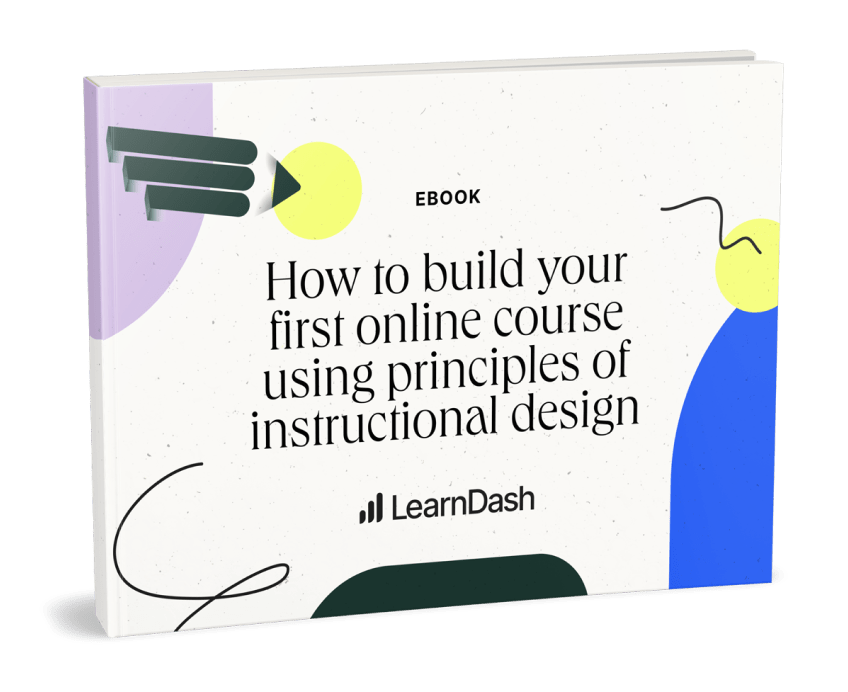
LMS Comparison: LearnDash vs. Thinkific
Wondering how LearnDash and Thinkific compare as Learning Management Systems? Let us give you a deep dive.
If you’re researching your options for hosting an online learning course, you’re probably aware that there are a lot of services out there to choose from. One of the most popular choices, Thinkific, offers users a fully-hosted platform that with all their needs in one place. It’s an easy on-ramp that can be more appealing to users who don’t consider themselves “tech-savvy,” but can leave them with fewer options down the road as they work toward building and expanding their course.
As a WordPress plugin, we obviously have a different philosophy about how to build and launch an online course. And while we know that we aren’t the perfect solution for everyone (some folks really don’t want to bother with the set-up!), we also believe we’re a better option than hosted options like Thinkific would have you believe.
“We tried Thinkific and Teachable before we started using LearnDash. Nothing compares to LearnDash. If you want to control your content and user experience, LearnDash is the best option. LearnDash allows you to decide how to present your courses, how to sell it and promote it. It integrates with WooCommerce and plenty of other plugins. Customer support is responding very fast.”
– Verified Reviewer
But with Thinkific, we have a little more of a dog in the fight than usual. Thinkific has written their own comparison post, including a chart with a breakdown of what they offer vs. what we offer. And let us say from the start that we don’t think their post is entirely honest.
So what we’d like to do is talk about what we offer while also setting the record straight on how our platform actually compares to theirs. We hope that by the time we finish, you’ll be able to make a decision that’s based on actual costs, benefits, and features. Even if you choose Thinkific, we would rather you did so as an informed customer, rather than as a soon-to-be-disappointed one.
Ready? Let’s dig in.
Pricing.
Let’s start with a basic cost comparison. Thinkific, in their comparison post, offers a breakdown of some common costs associated with running an online course. Unfortunately, they’ve chosen the pricing for one of their least expensive plans, and then inflated the bottom line on our side by comparing their “included” services to some of the more expensive options available.

That alone is enough to cry foul. But after posting the price of their “Basic” plan, they then compare features that are only included in their “Pro” plan. (We’ll get into that more in a minute.)
Now, we won’t quibble with their website hosting number. Hosting costs, as anyone can tell you, vary a lot. Suffice to say, you can pay both a lot more AND a lot less than $350/yr. to host your site. But, for an small, growth-oriented business, $29/mo. is a pretty fair budget.
Budgeting $1188/yr. for video hosting is a stretch, though. Many of our users don’t need video hosting at all—and many of those who do would more readily turn to free offerings, such as YouTube. For those who are ready to pay a premium for white-labeled content, there are options less expensive than what Thinkific is using in their comparison, and which offer more features and more control as well.
And yet, free video hosting is a huge part of Thinkific’s value proposition—something we noticed in our recent comparison post of Teachable as well. Both posts spent a lot of time promoting free video hosting, but as anyone who’s spent any time learning about instructional design can tell you, running an online course is about more than posting videos.
In fact, when push comes to shove, both Teachable and Thinkific seem to be video hosting sites that are attempting to pass themselves off as LMSs rather than education-focused platforms intent on delivering a high-quality e-learning experience to their learners.
Why do we say that? Well, let’s take a look the most fundamental instructional design tool of all: quizzes.
Quizzes.
You may rightly assume that if there’s one thing an online learning platform should do really well, it’s offer robust quiz options to educators. And we’d agree!
Quizzes are a fundamental way in which online educators assess the progress of their learners and provide feedback on how well they’ve understood learning material. Done well, quizzes aren’t just instructive—they’re engaging and even fun!
On LearnDash, our quiz options include the following:
- Eight quiz question types: single choice (true/false), multiple choice, free choice, sorting choice (ordering), matrix sorting choice (matching), fill in the blank, assessment (survey), essay (open answer).
- Weighted grading. Assign point values to questions, and subtract points for incorrect answers.
- Hints and explanations. Give your learners a clue, or offer them an explanation after they select an answer.
- Multiple answers. Let your learners select multiple correct answers for multiple choice questions.
- Question bank with categories and tags. When you create questions, you can store them in a question bank so that you can easily add them to future quizzes. You can also categorize and tag your questions, which can be useful to search for questions, or to create custom coding options.
- Randomize questions. You can randomize the order questions appear in a quiz, randomize a subset of questions, or randomize the answer options to multiple choice questions.
- Timed quizzes. Set a time limit on quizes.
But with Thinkific, your options are limited. To be fair, they do allow for explanations and multiple answers, and if you have their Pro plan you can randomize questions from a question bank. But there’s no weighted grades, and the only question type included on their platform is multiple choice
If you do want more advanced quiz questions types, however, you aren’t without options.
Which is to say, you have one option.
Thinkific incorporates with Brillium (if you’re on their Pro + Growth plan!) to offer more question types, all for the modest sum of $109/mo.!
Remember earlier, when Thinkific wanted to include the 3rd party cost of video hosting in an annual price comparison of our two offerings? They added $1188 to their estimated annual cost of using our platform, even though much more affordable options were available. Meanwhile, if you want to offer your learners anything more than the most basic multiple choice quizzes on their platform, you are limited to one 3rd party option that will cost you $1,308, billed annually. And that’s only if you’re ALSO on their $99/mo. plan, bringing the annual cost of Thinkific to $2,496, just to offer question types beyond multiple choice.
“LearnDash has all the features needed to create online courses in WordPress. I was able to install it, set it up and then delete my Thinkific accounts, saving me at least $1,800 per year! … Learndash integrates into my existing WordPress site and is WAY less expensive than Thinkific. Plus it is better than Thinkific and that I can fully customize everything just how I want it.”
– Kerry K.
Now, we aren’t opposed to using 3rd party integrations at all. In fact, we welcome them! We think that giving our users a full marketplace of options is the best way for them to find an affordable solution that meets their specific needs.
But we also believe in making sure our plugin offers a robust feature set for all basic instructional design tools. That’s why we’ve made sure that our users have plenty of options when it comes to their quizzes—not just in terms of question type, but in weighting quiz questions and assigning points.
And quizzes are just one of the features we’ve built into our plugin.
Features.
Now, although Thinkific regularly updates the year listed in their comparison review to make it look current, they actually haven’t kept up with the releases we’ve come out with over the past few years—features that expand our membership and group capabilities and offer new gamification tools to our users. In other words, they’re telling you that this is an accurate comparison as of 2021, but it’s actually out of date.
Since they originally wrote their comparison, we’ve added quite a number of features. And it’s something we’re committed to doing more of in the future!
Remember how we talked earlier about weighting quizzes with points? That’s not all you can use points for. We also have a gamification add-on (free to all users with an active license) that can take those points and apply them to a leaderboard. You can also set triggers based on learner actions (visiting a page or completing a quiz) and use them to award badges.
We’ve also released a certificate builder that makes it easier for educators to design custom course completion certificates for learners. We’ve developed a “Focus Mode” that removes distractions from the screen during lessons as a way of improving the learner experience. And we’ve added Groups capabilities that make it easier for educators to cluster peers into learning groups, provide conditional access to resources, set group leaders, and sell memberships.
To their credit, Thinkific does have what seems to be a fairly good “Communities” tool, which educators can use to creat forums for their learners. From what I can tell, it’s exactly the kind of thing course creators should offer their learners to provide extra value to their course.
But you have to be on Thinkific’s Pro plan to have access to one Community. After that, you have to be on their Pro + Growth plan, where I assume they will continue to upsell you on course features indefinitely.
Would you rather: 3rd party plugins, or the one thing you need a pricing tier out of reach?
All of this raises another important point about how Thinkific compares their product to ours. Thinkific is quick to point out when you need a 3rd party add-on to access a feature with LearnDash, but they’re less open about this when it comes to their own platform.
The truth is that the majority of Thinkific’s most promising features aren’t offered on their Basic plan. For example, they say they offer “Groups” (to manage marketing, not learners), but the features they describe is only available in their “Pro + Growth” plan, which starts at $99/yr. Ditto for “Membership,” course completion certificates, and even the ability to access additional add-ons.
These features are included as free add-ons with our plugin, and we have no restrictions on the add-ons you can buy from 3rd parties.
And yes, some of those plugins will be premium purchases, and it’s possible for the costs of licenses to add up. But the beauty of making a full library of plugins accessible to our users is that they can pick and choose according to their own priorities, and competition among plugins helps keep the prices fair!
Maybe you want to buy a simple gamification plugin, but go all-in on building a course community. You have options! That feels a whole lot better to most users than being locked into a system designed to keep the one tool you need a price point higher than what you can afford.
“The fact that it’s used by large universities in Florida, Michigan and Washington gave me confidence that it is reliable. We like how easy it is to create new lessons and assign quizzes to them. The add-on library is fairly large to help expand its capabilities. It’s a popular tool with a lot of resources online to help learn how to make the most of it. There are a lot of built-in options for tweaking how it works.”
– Jonathan B.
Thinkific will help you market instructional videos while providing very few real instructional design tools.
If all you want is to host a series of well-produced videos on a platform that integrates a basic suite of marketing tools, Thinkific will be an expensive option for you—but one which will also eliminate some of the management behind running a website. For a lot of people, that’s a big bonus, especially if running an online course isn’t your full-time job, and you just want to put up something quick that you can then delete later when you’re no longer interested in paying the subscription costs.
But the limitations of Thinkific are hard to ignore, especially for educators who really care about creating a course that is more than a series of web videos. And while this process does take time to set up, many of our users are able to get their courses off the ground in a matter of hours—even those with no previous technical background.
For most users, making a decision is a balancing act of convenience vs. cost vs. control. Thinkific gives you a little more convenience for a lot more cost and almost no control. We offer compete control at an affordable cost, and we don’t even sacrifice convenience that much in the process.Sure, we’re biased. But at the end of the day, we truly believe there’s no comparison here at all.

LearnDash Collaborator
@LearnDashLMS







